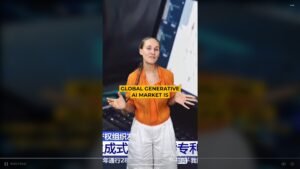
China’s influencer economy in 2025 is bigger, faster, and more competitive than ever, writes marketing expert Ashley Dudarenok in an overview of this booming industry in Chozan. “In 2024 alone, MCNs — multi-channel networks — were behind many of the country’s record-breaking livestream sales and viral content trends,” she adds.
Ashley Dudarenok:
China’s influencer economy is bigger, faster, and more competitive than ever. In 2024 alone, MCNs — multi-channel networks — were behind many of the country’s record-breaking livestream sales and viral content trends. They’re the engines connecting brands with top creators, building campaigns across Douyin, Kuaishou, Bilibili, and RedNote, and turning social buzz into measurable sales.
From e-commerce giants managing thousands of livestream hosts to boutique agencies producing high-concept micro-dramas, MCNs are shaping the industry.
- How products launch
- How stories are told, and
- How consumers make buying decisions in China’s digital-first market.
Understanding these networks isn’t optional for brands inside and outside China — it’s essential for making the right partnerships and entering the market with impact.
Thinking about working with a Chinese MCN?
Choosing the right partner depends on your category, audience, and campaign goals. Platform strengths, influencer network quality, and track record all matter.
The full article is available here.
Ashley Dudarenok is a speaker at the China Speakers Bureau. Do you need her at your meeting or conference? Do get in touch or fill in our speakers’ request form.
Are you looking for more stories by Ashley Dudarenok? Do check out this list.






